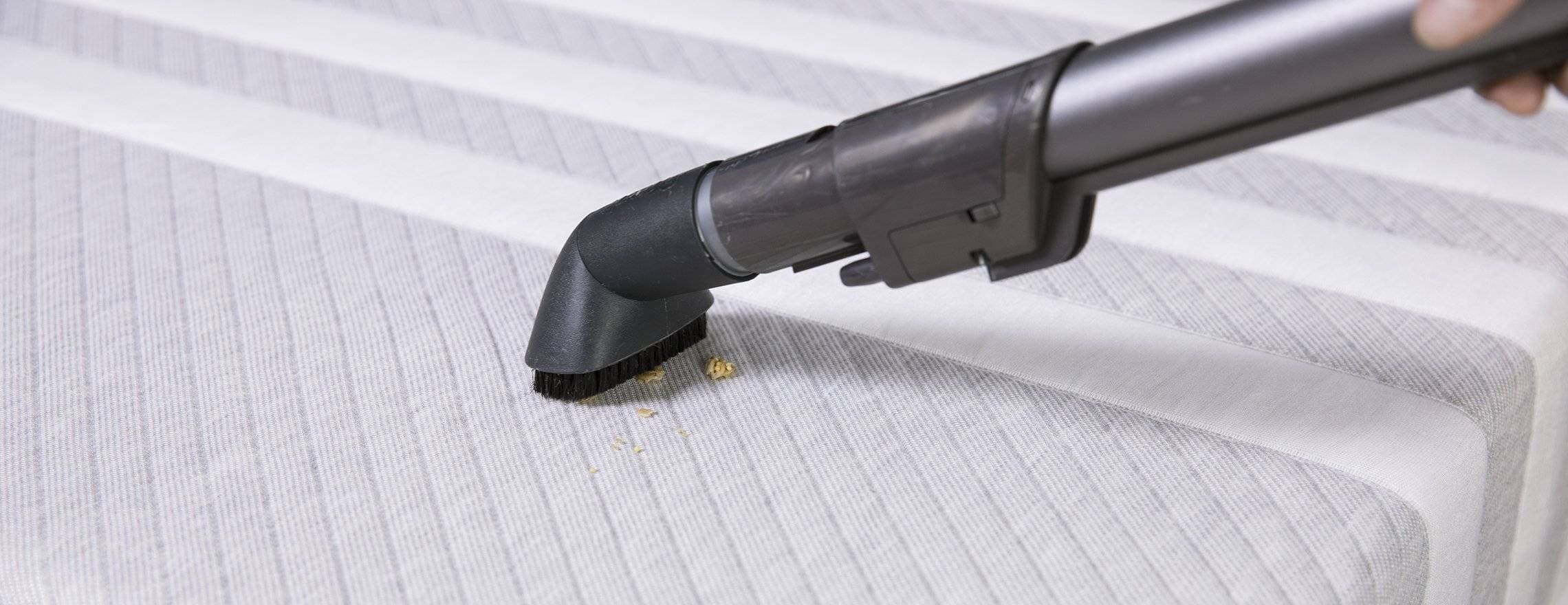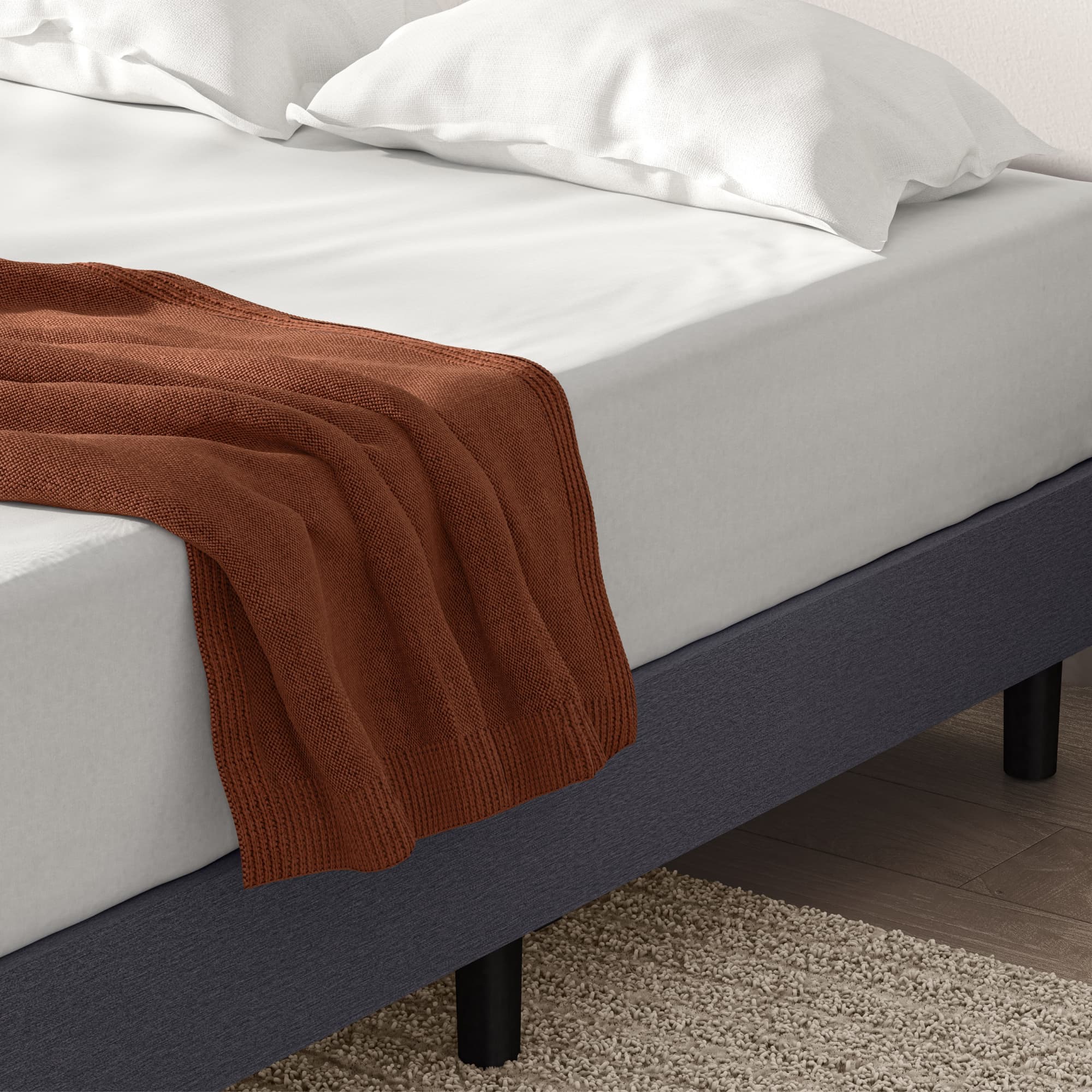Learning how to clean a foam mattress is easier than you might think, and you’ve come to the right place to do it! At Leesa, we’ve been dedicated to providing the highest quality foam mattresses for over 30 years—and we know exactly how to care for our products.
It’s important to know how to clean foam mattresses because improper care can damage them. The health of your mattress can impact your quality of sleep, and ultimately your overall health, so learning to protect your mattress can also protect you and your loved ones.
In this article, you'll learn how to clean a foam mattress properly so that it will last longer and continue to give you restful sleep every night. But of course, you may be wondering, if all I am doing is sleeping, why is my mattress dirty in the first place?
Let’s examine what causes mattress stains and odors before diving into the details of how to clean a foam mattress correctly.
Why is my Memory Foam Mattress Dirty?
Over time, dust, mites, skin cells, sweat, bacteria, and much, much more can build up on your mattress . So even if you haven’t spilled anything on your mattress, it is bound to pick up stains and odors eventually.
Of course, there are also accidents. Urine, blood, coffee—you name it—can cause unsightly stains on your memory foam mattress. But once you know how to clean a foam mattress properly, those stains will be a thing of the past.
Are you ready to learn how to clean foam mattresses? Let’s get started!
9 Tips on How to Clean a Foam Mattress Properly
Here are our top tips on how to clean foam mattresses:
1. Spot clean spills immediately
Accidents happen, but when they do, it’s up to you to act quickly. As soon as possible, blot up spills by dabbing the spot with a clean towel or cloth to absorb any excess moisture.
But Do Not Rub the Stain.
Rubbing or scrubbing your mattress cover or memory foam mattress topper will only serve to spread the stain. It can also damage the foam, making cleaning overall more of a challenge.
If you still have a stain after dabbing, there are plenty of ways to remove it with household items you have on hand. Just keep reading to learn what they are.
2. Try not to let stains dry
When learning how to clean a foam mattress, one of the most important things to remember (besides not rubbing the stain) is to tackle the stain while it’s still wet. Once a stain dries, it becomes much more difficult to remove.
3. Avoid using harsh chemicals
Rule number three when learning how to clean a foam mattress: Put those chemicals away!
Harsh chemicals can damage the foam in your mattress. Avoid using bleach, ammonia, or other harsh cleaning solutions when deciding how to get stains out of memory foam mattresses.
4. Add a dash of baking soda
So now you might be wondering how to clean a foam mattress if you aren’t allowed to reach for cleaning solutions. The answer? Baking soda!
Household products like baking soda or vinegar are your best bet when learning how to get stains out of memory foam mattresses.
Baking soda can be used to remove a surprising amount of stains and odors from your memory foam mattress. Whether you have sweat stains, blood stains, or pet odors, this simple cleaning solution can help. Here’s how!
How to clean a foam mattress with sweat stains
- Combine three tablespoons of baking soda and one drop of liquid dish soap in a large spray bottle. Add 8 ounces of hydrogen peroxide.
- Spray the stain lightly. Allow the solution to sit for five to 10 minutes. (Don't leave the solution on for too long, as the hydrogen peroxide solution can bleach your mattress.)
- After about 10 minutes, dab away all the baking soda and moisture with a clean, dry cloth or paper towel.
How to clean a foam mattress with blood stains
When it comes to blood stains on your mattress, it's important to remember you need to act quickly before the stain sets. Avoid using hot water because it will set the stain.
Blood is a protein stain (like any bodily fluids, vomit included). The trick to treating protein stains is to apply a solution that breaks down protein. The recipe below contains baking soda. It alkalizes the blood, helps loosen the stain, and ultimately removes it.
- Mix one part baking soda and two parts cool water to form a paste.
- With a cool, damp cloth, apply the paste to the stained area of the mattress and lightly dab, working the paste into the stain.
- Let the paste dry for 30 minutes.
- Repeat the process with a cool, damp cloth. The water must be cool. Warm or hot water will cause the stain to set, making it more difficult to remove.
- Lightly dab and press to remove as much of the baking soda mixture as possible.
Repeat this process if the stain isn't gone. Allow the area to dry completely before reapplying. If you have baking soda residue left over, vacuum your mattress cover with the upholstery attachment of your vacuum.
5. Treat urine stains with vinegar
Learning how to clean foam mattresses with urine stains can seem daunting. But don’t worry! Even though you have to take an extra step or two to avoid odors, urine stains are still easy to tackle.
- Take care of the stain as soon as possible. Use a dry cloth or towel and dab to absorb as much liquid as possible.
- Lightly spray the area with distilled white vinegar, and let the vinegar solution sit for just a few minutes.
- With a clean, dry towel or paper towel, dab the excess solution to dry as thoroughly as you can.
- Sprinkle the damp area liberally with baking soda and wait. (And wait some more.) In general, letting the baking soda sit overnight is best to dry the cover and mattress completely. The baking soda will help draw the vinegar and urine odor from the mattress.
- Vacuum with the upholstery attachment of your vacuum cleaner.
- Repeat if needed.
6. Let your mattress air-dry
After cleaning your mattress, you should always try to let it air-dry. Air-drying will prevent it from being damp for a prolonged period of time. It's important to make sure it's completely dry before putting any bedding back on.
7. Use your vacuum cleaner
Over time, dust mites and dirt build up , not only on your bedding but also on your mattress and memory foam topper. That's why you should vacuum your foam mattress a few times a year. If you have pets, you may want to vacuum more frequently.
As with most foam mattresses, your Leesa mattress is naturally less prone to harboring allergens and dust mites. However, to keep your bedroom clear of allergens and mites, it's recommended you strip your mattress and vacuum the whole surface with a HEPA-rated vacuum cleaner every 3 to 6 months.
When vacuuming, make sure to use the upholstery attachment to protect your mattress from harsh bristles.
8. Deep clean with a steamer
If you need to deep clean your mattress, do it with a steamer! You can use a hand-held or full-size steam cleaner. Just be sure to follow the manufacturer's instructions and to let your mattress fully dry afterward.
9. Focus on prevention
Of course, cleaning foam mattresses is much easier if you prevent stains from happening in the first place. Taking proper steps to keep your mattress clean is important—before accidents occur.
So let’s take a look at how spring-cleaning memory foam can prevent unwanted mattress stains and odors.
How to Prevent Stains and Odors on a Memory Foam Mattress
Here are our top tips for preventing stains and odors on your Leesa mattress:
Use a mattress protector
We highly recommend that you purchase a mattress protector for your memory foam mattress. A mattress protector provides a barrier between stains, spills, dust, and dirt—so they don’t touch your mattress. Using a mattress protector will ensure your mattress lasts longer.
Change your sheets weekly
As a general rule, you should clean your bedding once a week. These are your sheets, pillowcases, and any other item you come in contact with during the night.
Your sheets collect dust, dirt, dead skin cells, sweat, body oils, and pet dander (if your furry friend is allowed in your bedroom) while you sleep. If once a week seems excessive to you, try not to leave the same sheets on your bed for more than two weeks.



.jpg&w=3840&q=75)